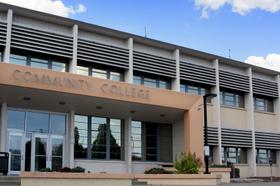Careers: Broadcasting
Whether you’re interested in entertaining, sharing insightful commentary, reporting interesting news stories, or working in production, a career in broadcasting and radio may be perfect for you! If you have the charisma and drive to work in this interactive field, begin your journey with the proper training at your local community college.
Careers in Radio Broadcasting
Depending on one’s professional goals and interests, students can pursue a variety of degree pathways to develop the necessary skills for a radio career.
Commonly, students pursuing a career in professional radio earn their Associate of Applied Science degree. Students can enroll in departments such as broadcasting, telecommunications, or even specialized programs designed for radio technology and production. In examining some of the core classes often required by such programs, students may need to complete mandatory courses such as:
- History of broadcasting radio
- Public speaking
- Radio broadcasting and writing
- Advertising
- Related technology and computer courses
- Related legal courses about FCC guidelines and broadcasting laws
While each college has its course requirements, broadcasting programs can often expand to include training for television and radio. For example, students enrolled in Cayuga Community College’s Telecommunications program are exposed to combined instructional models to learn about both radio and television broadcasting. As a result, students in the program enjoy courses such as “Journalism Practicum,” “Interactive Media Production,” “Media Writing,” “Audio for Media,” as well as “Radio Practicum” and “Radio and TV Announcing.” Every community college’s broadcasting program varies, and some may specialize specifically in radio.






















